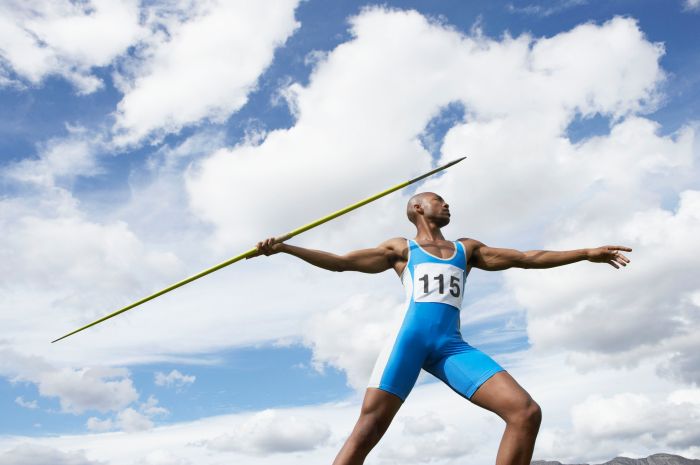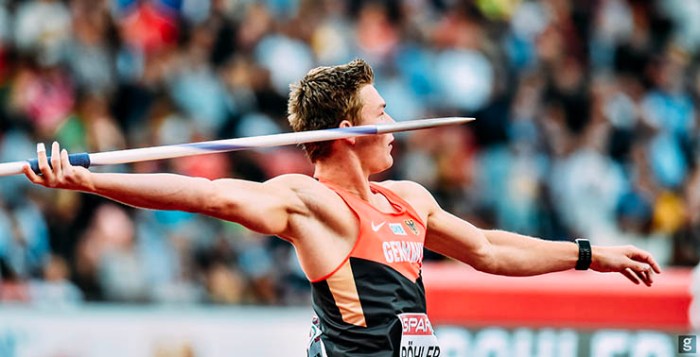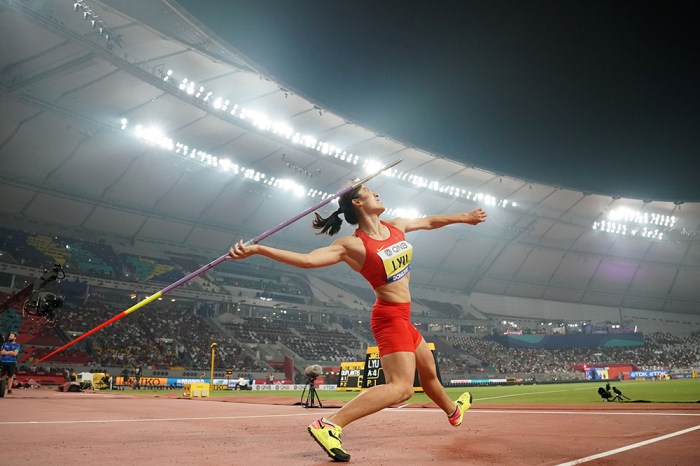In the javelin throw at a track and field event, athletes showcase their strength, precision, and technique. This captivating sport demands a harmonious blend of physical prowess and mental focus, as throwers strive to propel the javelin through the air with both accuracy and distance.
From the gripping of the javelin to the final release, every aspect of the throw is meticulously choreographed, demanding unwavering concentration and the pursuit of perfection.
The javelin throw is not merely a test of brute force; it is a symphony of biomechanics, where each movement contributes to the overall trajectory of the javelin. The thrower’s stance, arm action, and release point all play a crucial role in determining the javelin’s flight path, making it an art form as much as it is an athletic endeavor.
1. The Javelin Throw
An Overview
The javelin throw is a track and field event in which athletes hurl a javelin, a spear-like implement, as far as possible. It has been a part of the Olympic Games since 1908 for men and 1932 for women.
The objective of the javelin throw is to throw the javelin the farthest distance within a designated area. The thrower holds the javelin by its grip and runs down a runway before releasing it with a powerful arm action. The javelin then flies through the air and lands on the ground.
There are two main techniques used in the javelin throw: the Finnish style and the American style. In the Finnish style, the thrower holds the javelin behind the head and swings it forward in a circular motion. In the American style, the thrower holds the javelin in front of the body and swings it forward in a straight line.
Equipment, In the javelin throw at a track and field event
The javelin is made of a metal shaft with a pointed tip and a tail made of cork or plastic. The length and weight of the javelin vary depending on the age and gender of the thrower.
The throwing area is a rectangular runway that is 30 meters long and 4 meters wide. The runway is divided into two parts: the approach and the release zone. The approach is the part of the runway where the thrower runs up to the release zone.
2. The Mechanics of the Javelin Throw

The javelin throw is a complex movement that requires a combination of strength, speed, and coordination. The biomechanics of the javelin throw can be divided into four phases: the grip, the stance, the arm action, and the release.
The grip is the way the thrower holds the javelin. The most common grip is the “finger grip,” in which the thrower places the index finger and middle finger on the grip of the javelin and wraps the thumb around the shaft.
The stance is the position of the thrower’s body at the start of the throw. The most common stance is the “side-step” stance, in which the thrower stands with one foot in front of the other and the javelin held behind the head.
The arm action is the movement of the thrower’s arm as they swing the javelin forward. The arm action should be smooth and powerful, with the thrower using their entire body to generate momentum.
The release is the point at which the thrower releases the javelin. The release should be timed so that the javelin leaves the thrower’s hand at the highest point of the swing. The release point will affect the trajectory of the javelin.
3. Factors Affecting Javelin Throw Performance
There are a number of factors that can affect javelin throw performance, including strength, speed, technique, and environmental conditions.
Strength is an important factor in the javelin throw, as it is required to generate the power needed to throw the javelin a long distance. Speed is also important, as it allows the thrower to run up to the release zone with greater momentum.
Technique is another important factor in the javelin throw. A good technique will allow the thrower to generate more power and accuracy with their throw. Environmental conditions can also affect javelin throw performance, with wind and rain being the most common factors.
4. Common Errors in the Javelin Throw: In The Javelin Throw At A Track And Field Event

There are a number of common errors that javelin throwers make, which can limit their performance.
One common error is rushing the throw. This can cause the thrower to lose power and accuracy. Another common error is not using the full range of motion in the arm swing. This can also limit the thrower’s power and accuracy.
Other common errors include not holding the javelin correctly, not having the correct stance, and not releasing the javelin at the correct point.
5. Training for the Javelin Throw
Training for the javelin throw requires a combination of strength, speed, and technique training. Strength training can be done with exercises such as squats, deadlifts, and bench press. Speed training can be done with exercises such as sprints, plyometrics, and agility drills.
Technique training can be done by practicing the different phases of the javelin throw. It is also important to get feedback from a qualified coach to help improve technique.
A comprehensive training program for the javelin throw should include a combination of strength, speed, and technique training. The training program should be tailored to the individual thrower’s needs and abilities.
6. The Javelin Throw in Competition

The javelin throw is a competitive event that is held at track and field meets around the world. The goal of the competition is to throw the javelin the farthest distance.
Javelin throwers compete in a series of rounds. In the qualifying round, each thrower gets three attempts to throw the javelin as far as possible. The top 12 throwers from the qualifying round advance to the final.
In the final, each thrower gets three more attempts to throw the javelin as far as possible. The thrower with the longest throw wins the competition.
Questions and Answers
What is the objective of the javelin throw?
The objective is to throw the javelin as far as possible, with the javelin landing within a designated sector.
What are the key techniques used in the javelin throw?
The two main techniques are the Finnish style and the American style, each with its own variations in grip, stance, and arm action.
What factors influence javelin throw performance?
Key factors include strength, speed, technique, training, and environmental conditions.
What are some common errors in the javelin throw?
Common errors include incorrect grip, improper stance, and premature release.